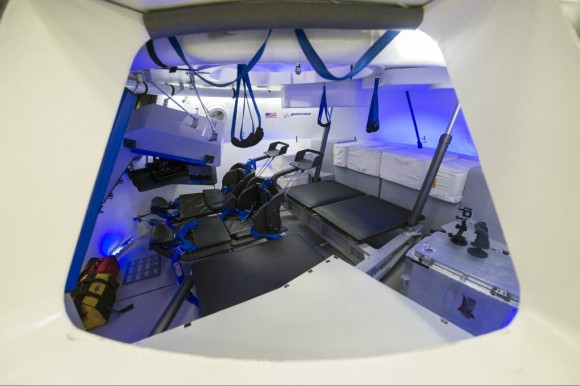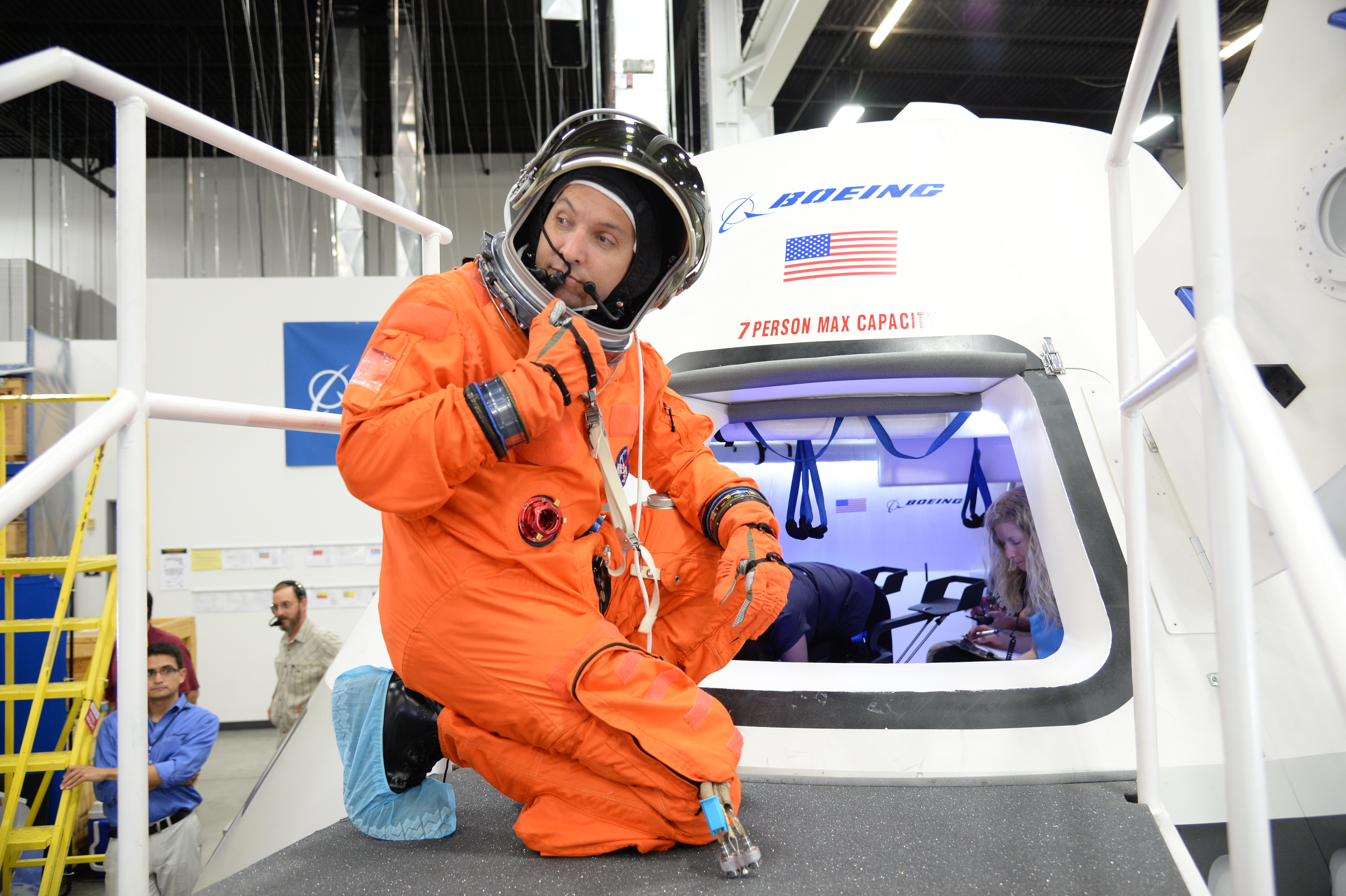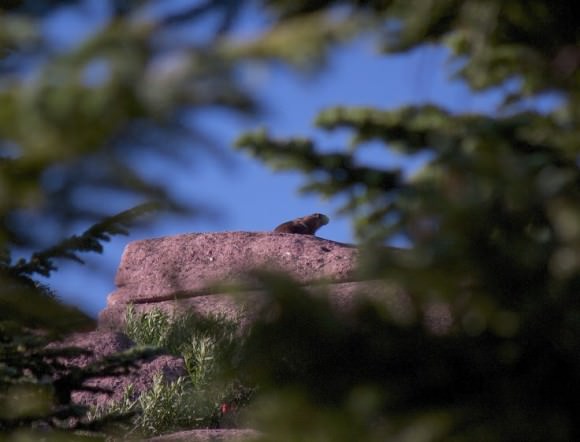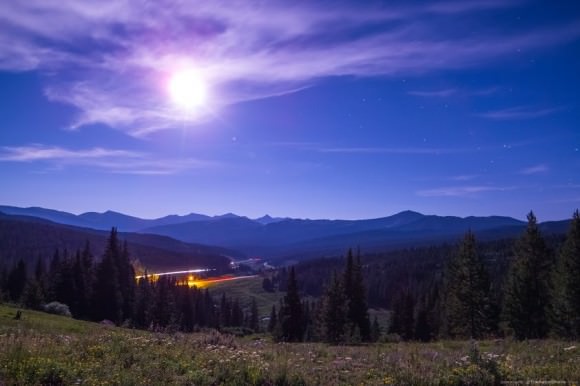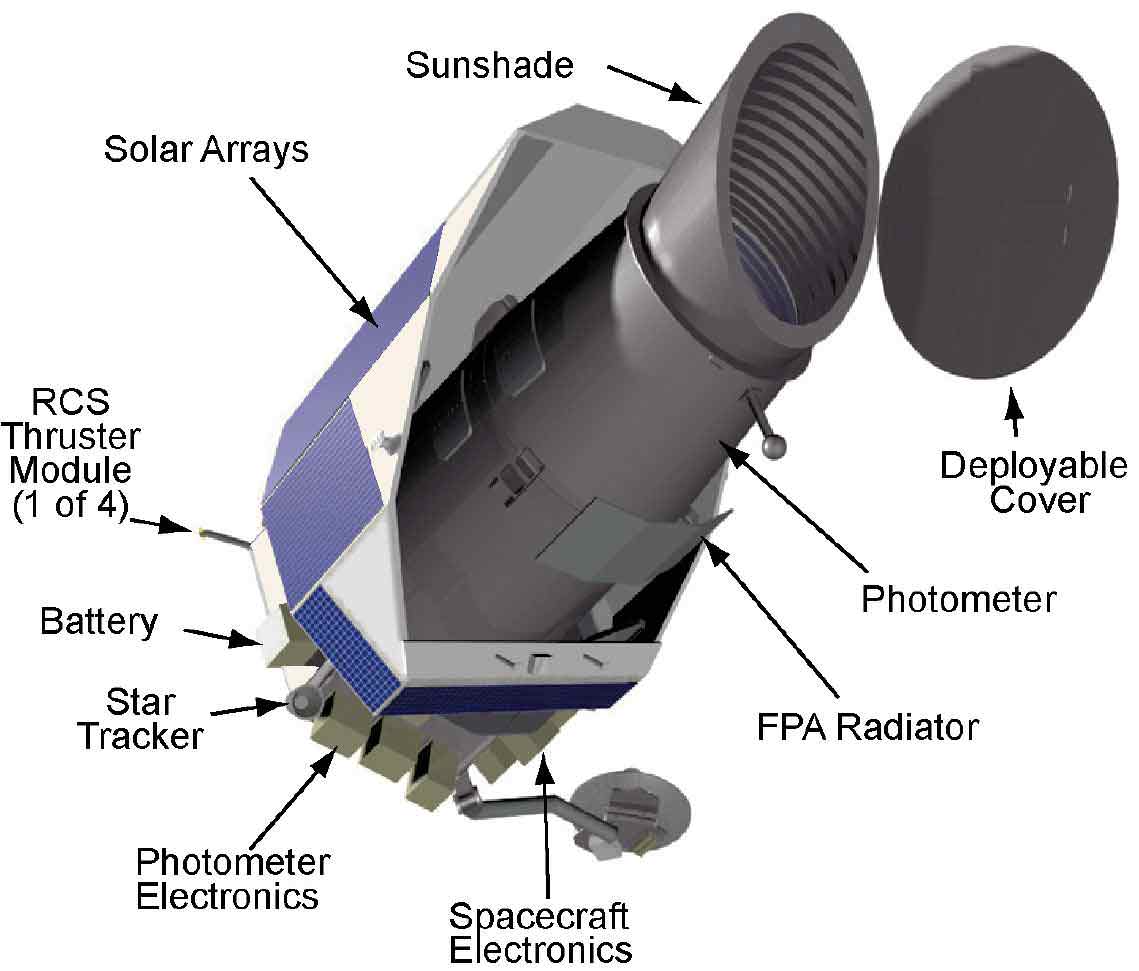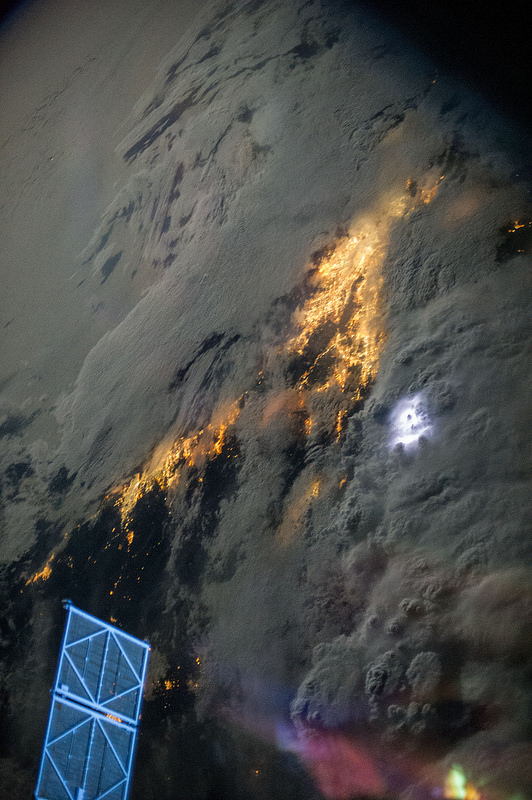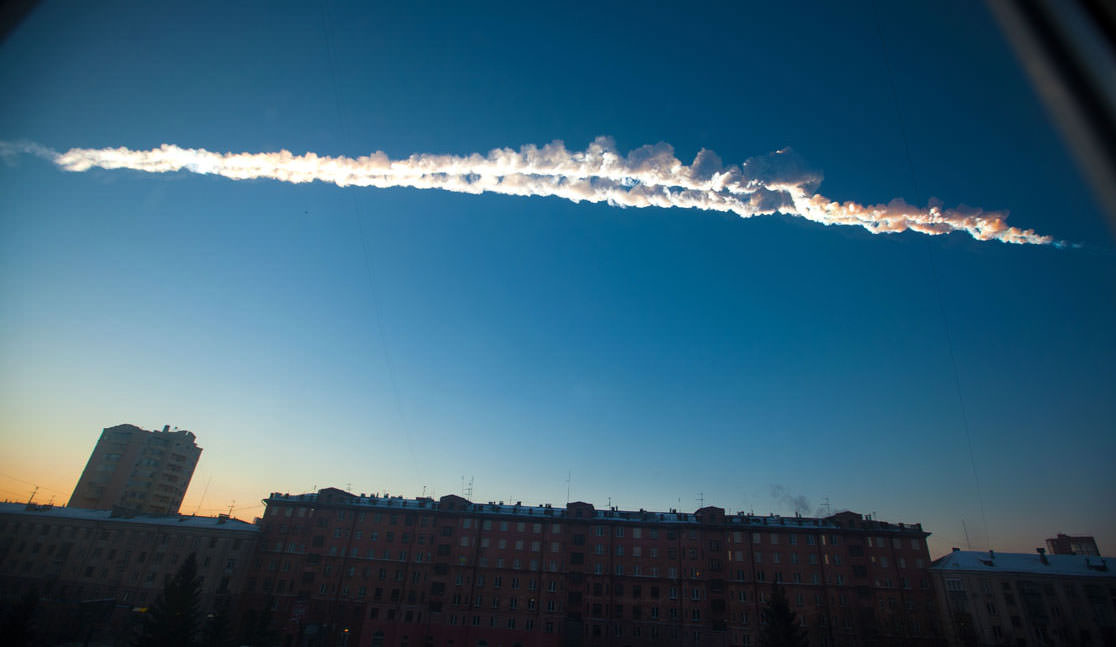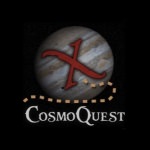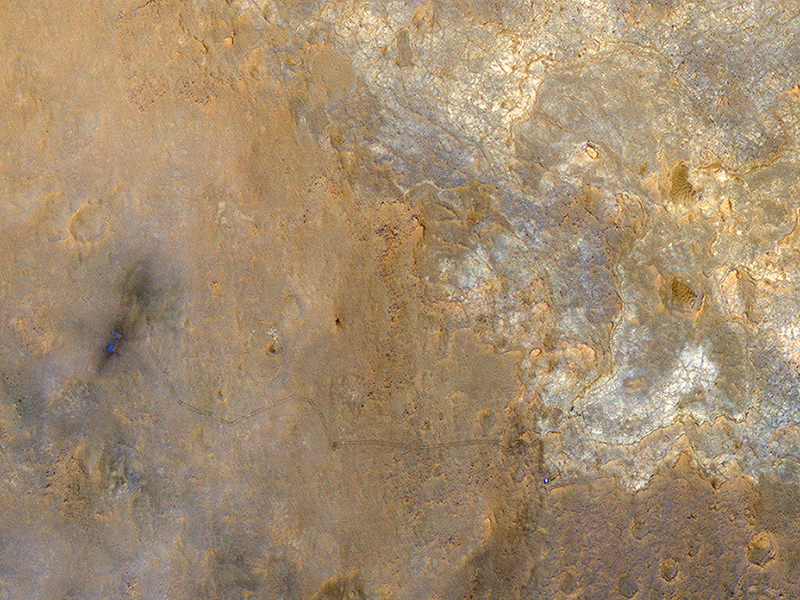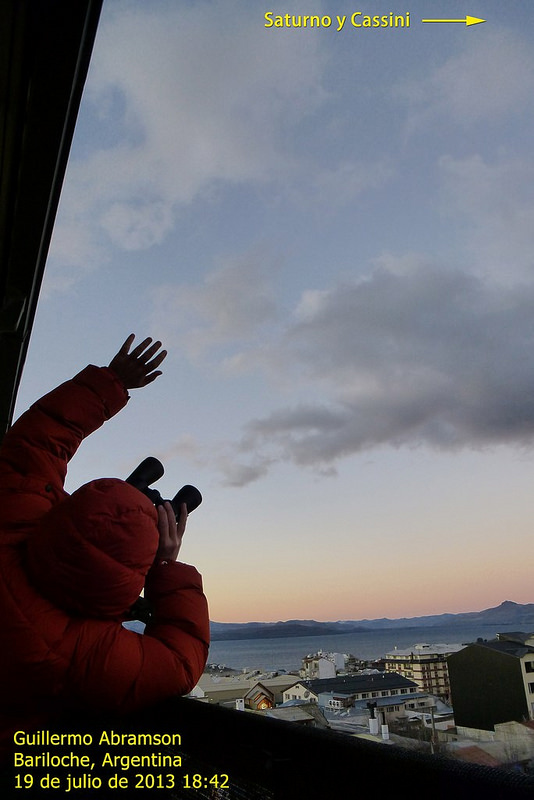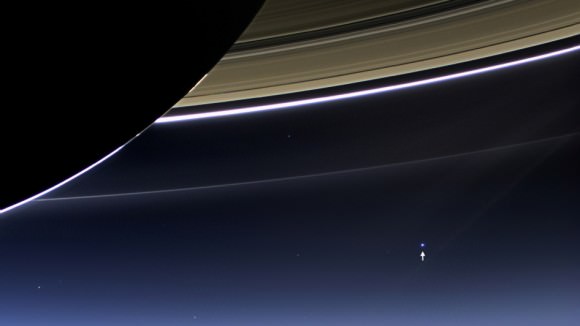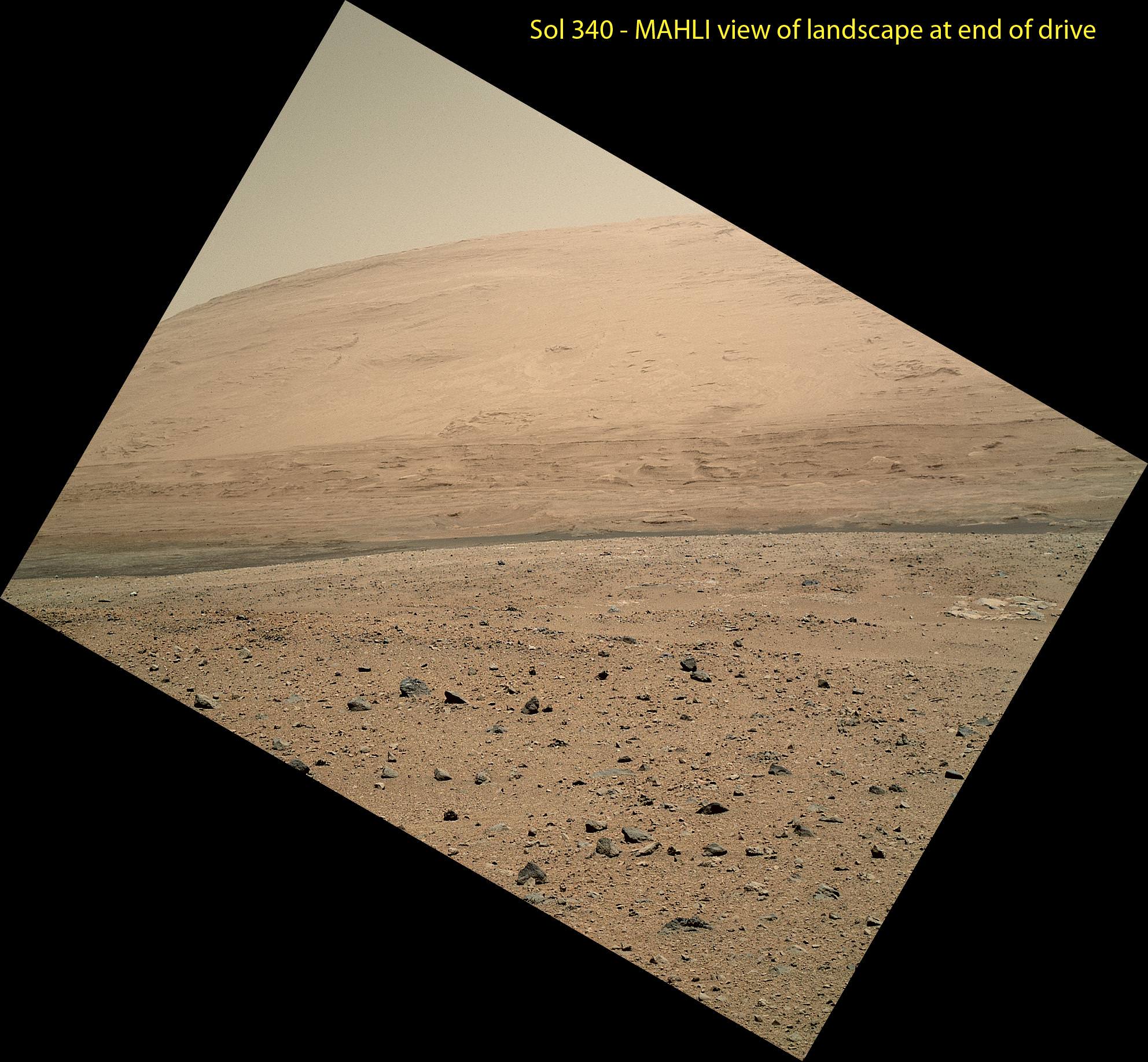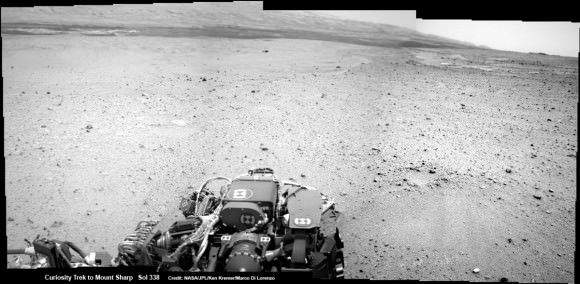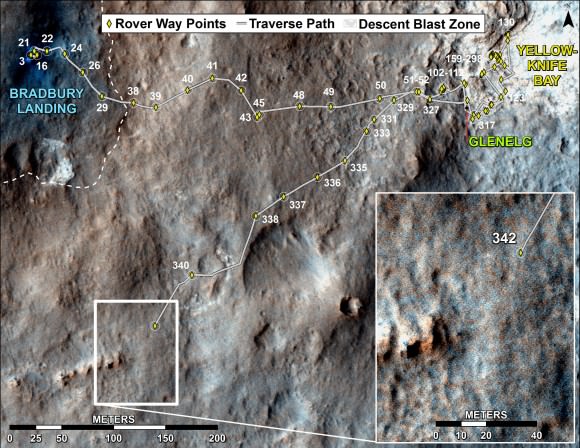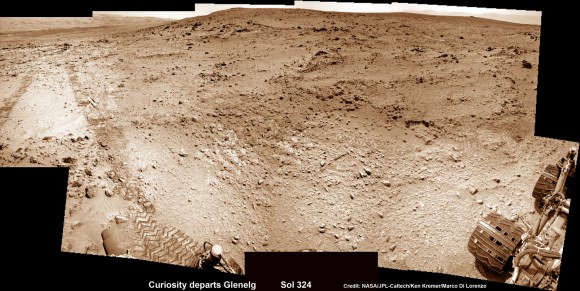A pair of NASA astronauts donned their spacesuits for key fit check evaluations inside a test version of the Boeing Company’s CST-100 commercial ‘space taxi’ which was unveiled this week for the world’s first glimpse of the cabin’s interior.
Boeing is among a trio of American aerospace firms, including SpaceX and Sierra Nevada Corp, seeking to restore America’s capability to fly humans to Earth orbit and the space station using seed money from NASA’s Commercial Crew Program (CCP).
Astronauts Serena Aunon and Randy Bresnik conducted a day long series of technical evaluations inside a fully outfitted, full scale mock up of the CST-100, while wearing NASA’s iconic orange launch-and-entry flight suits from the space shuttle era.
During the tests, Boeing technicians monitored the astronauts ergonomic ability to work in the seats and move around during hands on use of the capsules equipment, display consoles and storage compartments.
The purpose of the testing at Boeing’s Houston Product Support Center is to see what works well and what needs modifications before fixing the final capsule design for construction.
“It’s an upgrade,” said astronaut Serena Aunon at the evaluation. “It is an American vehicle, of course it is an upgrade.”
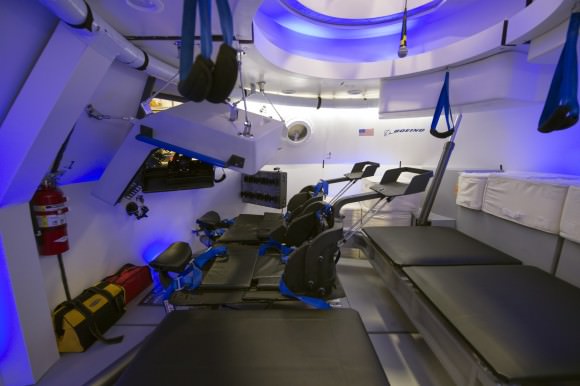
Image Credit: NASA/Robert Markowitz
Former NASA Astronaut Chris Ferguson, the commander of the final shuttle flight (STS-135) by Atlantis, is leading Boeing’s test effort as the director of Boeing’s Crew and Mission Operations.
“These are our customers. They’re the ones who will take our spacecraft into flight, and if we’re not building it the way they want it we’re doing something wrong,” said Ferguson.
“We’ll probably make one more go-around and make sure that everything is just the way they like it.”
The CST-100 is designed to carry a crew of up to 7 astronauts, or a mix of cargo and crew, on missions to low-Earth orbit (LEO) and the International Space Station (ISS) around the middle of this decade.
Although it resembles Boeing’s Apollo-era capsules from the outside, the interior employs state of the art modern technology including sky blue LED lighting and tablet technology.
Check out this video showing the astronauts and engineers during the CST-100 testing
Nevertheless Boeing’s design goal is to keep the flight technology as simple as possible.
“What you’re not going to find is 1,100 or 1,600 switches,” said Ferguson. “When these guys go up in this, they’re primary mission is not to fly this spacecraft, they’re primary mission is to go to the space station for six months. So we don’t want to burden them with an inordinate amount of training to fly this vehicle. We want it to be intuitive.”
The CST-100 crew transporter will fly to orbit atop the venerable Atlas V rocket built by United Launch Alliance (ULA) from Launch Complex 41 on Cape Canaveral Air Force Station in Florida.

Boeing is aiming for an initial three day manned orbital test flight of the CST-100 during 2016, says John Mulholland, Boeing vice president and program manger for Commercial Programs.
The 1st docking mission to the ISS would follow in 2017 – depending on the very uncertain funding that Congress approves for NASA.
The Atlas V was also chosen to launch one of Boeing’s commercial crew competitors, namely the Dream Chaser mini shuttle built by Sierra Nevada Corp.

NASA’s CCP program is fostering the development of the CST-100 as well as the SpaceX Dragon and Sierra Nevada Dream Chaser to replace America’s capability to launch humans to space that was lost following the retirement of NASA’s space shuttle orbiters two years ago in July 2011.
Since 2011, every American astronaut has been 100% dependent on the Russians and their Soyuz capsule to hitch a ride to the ISS.
“We pay one of our [ISS] partners, the Russians, $71 million a seat to fly,” says Ed Mango, CCP’s program manager. “What we want to do is give that to an American company to fly our crews into space.”
Simultaneously NASA and its industry partners are designing and building the Orion crew capsule and SLS heavy lift booster to send humans to the Moon and deep space destinations including Near Earth Asteroids and Mars.
